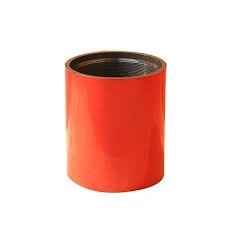- Afrikaans
- Albanian
- Amharic
- Arabic
- Armenian
- Azerbaijani
- Basque
- Belarusian
- Bengali
- Bosnian
- Bulgarian
- Catalan
- Cebuano
- Corsican
- Croatian
- Czech
- Danish
- Dutch
- English
- Esperanto
- Estonian
- Finnish
- French
- Frisian
- Galician
- Georgian
- German
- Greek
- Gujarati
- Haitian Creole
- hausa
- hawaiian
- Hebrew
- Hindi
- Miao
- Hungarian
- Icelandic
- igbo
- Indonesian
- irish
- Italian
- Japanese
- Javanese
- Kannada
- kazakh
- Khmer
- Rwandese
- Korean
- Kurdish
- Kyrgyz
- Lao
- Latin
- Latvian
- Lithuanian
- Luxembourgish
- Macedonian
- Malgashi
- Malay
- Malayalam
- Maltese
- Maori
- Marathi
- Mongolian
- Myanmar
- Nepali
- Norwegian
- Norwegian
- Occitan
- Pashto
- Persian
- Polish
- Portuguese
- Punjabi
- Romanian
- Russian
- Samoan
- Scottish Gaelic
- Serbian
- Sesotho
- Shona
- Sindhi
- Sinhala
- Slovak
- Slovenian
- Somali
- Spanish
- Sundanese
- Swahili
- Swedish
- Tagalog
- Tajik
- Tamil
- Tatar
- Telugu
- Thai
- Turkish
- Turkmen
- Ukrainian
- Urdu
- Uighur
- Uzbek
- Vietnamese
- Welsh
- Bantu
- Yiddish
- Yoruba
- Zulu
bull plug dimensions
Understanding Bull Plug Dimensions A Comprehensive Guide
In the world of plumbing and engineering, bull plugs play a crucial role in ensuring the integrity and functionality of various systems. Bull plugs, sometimes referred to as blind plugs or threaded plugs, are used to seal the ends of pipes or fittings. They are vital components in different applications, from construction to manufacturing processes. Understanding bull plug dimensions is essential for proper installation and function. This article will delve into the definitions, dimensions, materials, and applications of bull plugs.
What are Bull Plugs?
Bull plugs are cylindrical plugs with external threads designed to fit into corresponding female threaded fittings or pipe ends. Their primary purpose is to close off a pipeline or fitting, preventing the escape of fluids, gases, or other substances contained within. They are typically used in configurations where a permanent or semi-permanent seal is required.
Common Dimensions of Bull Plugs
Bull plugs come in various sizes and dimensions, making them suitable for different pipe diameters and applications. The dimensions are primarily determined by the nominal pipe size (NPS) system, which classifies pipes by their diameter in inches.
1. Diameter The most critical dimension of a bull plug is its diameter. This measurement corresponds to the specific size of the pipes or fittings it will seal. For instance, a 1-inch bull plug has a diameter of approximately 1 inch, while a 2-inch bull plug measures about 2 inches in diameter.
2. Length The length of a bull plug can vary significantly. Shorter plugs are typically used in applications where space is limited, while longer plugs may be more suitable for thicker walls or specific installation requirements.
3. Thread Size and Pitch The thread size (represented in terms of threads per inch) is also essential. Bull plugs are manufactured with various thread types, including NPT (National Pipe Tapered) or BSP (British Standard Pipe). The correct thread size ensures a proper and secure fit, reducing the likelihood of leaks.
4. Hex Size Many bull plugs have a hexagonal shape at the top, allowing for easy installation and removal with wrenches. The hex size must match the appropriate tool to ensure proper handling.
Materials Used for Bull Plugs
Bull plugs are manufactured from a variety of materials, each suited for different environments and applications. Some of the most common materials include
1. Brass Known for its corrosion resistance and durability, brass is a popular choice for plumbing and heating applications. Brass plugs are ideal for water and gas lines.
bull plug dimensions

2. Stainless Steel Offering superior strength and resistance to corrosion, stainless steel bull plugs are often used in industrial applications, especially where high temperatures and pressures are involved.
3. PVC For applications involving chemicals or water, PVC bull plugs are favored due to their lightweight and resistance to corrosion.
Applications of Bull Plugs
Bull plugs find application across multiple industries and settings. Some common uses include
1. Plumbing Systems In plumbing applications, bull plugs are used to seal end-of-line piping, preventing water from escaping and maintaining pressure within systems.
2. Hydraulic and Pneumatic Systems Bull plugs serve to close hydraulic or pneumatic systems, ensuring that fluids or gases do not leak and maintaining system integrity.
3. Manufacturing In manufacturing processes, bull plugs are used to seal ports and prevent contamination of the substance being produced.
4. Automotive In automotive systems, bull plugs may be used to block off unused ports or access points on engines and transmission systems.
5. Construction In construction, bull plugs are often employed to protect open pipe ends from dust and debris during building projects.
Conclusion
In summary, understanding bull plug dimensions is essential for professionals working with pipe systems. Proper dimensioning ensures a snug fit, preventing leaks and maintaining the integrity of numerous applications, from plumbing to manufacturing. By knowing the various materials and dimensions available, engineers and tradespeople can select the appropriate bull plugs for their specific needs, ensuring efficiency and safety in their operations. With their diverse applications and robust designs, bull plugs remain a fundamental component in modern engineering and construction.
-
Tubing Pup Joints: Essential Components for Oil and Gas OperationsNewsJul.10,2025
-
Pup Joints: Essential Components for Reliable Drilling OperationsNewsJul.10,2025
-
Pipe Couplings: Connecting Your World EfficientlyNewsJul.10,2025
-
Mastering Oilfield Operations with Quality Tubing and CasingNewsJul.10,2025
-
High-Quality Casing Couplings for Every NeedNewsJul.10,2025
-
Boost Your Drilling Efficiency with Premium Crossover Tools & Seating NipplesNewsJul.10,2025







